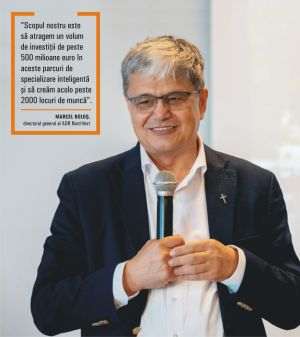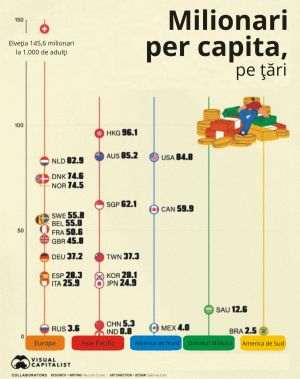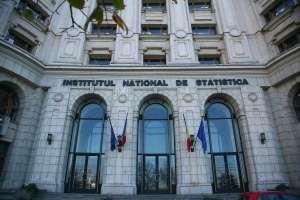
It was terrible then, on April 15, 2019, when the Notre-Dame cathedral in Paris caught fire, the famous, historical, beautiful, beloved, wonderful house of God! Octav Drăgan, the Romanian photographer of Paris, was there and remembers that, at one point, all the concerned onlookers sang religious hymns dedicated to the Virgin or, on their knees, prayed that the cathedral Notre-Dame, from the heart Paris. dedicated to the Mother of God, would not perish.
The embers on the roof of the cathedral had not completely died down, when the Pinault family, billionaires in the luxury industry, announced that they were donating one hundred million euros for the restoration of the historic monument. The reply was not long in coming and the Arnault family doubled the amount: 200 million euros for Notre-Dame! No one was surprised, we were already used to this competition that brought only good things for consumers of art wonders. The two heavyweights, François Pinault and Bernaurd Arnault, were billionaire luxury businessmen who had made their art collection an innocent but very expensive pleasure.
The Pinault Collection was initiated and largely created by François Pinault. Seriously past 80, the businessman started closer to the bottom, from lumber, and reached very high, through the luxury industries. In 2003, he let the work to his son and retired to the world of art, where he had already entered seriously. In 2005, he buys the Palazzo Grassi in Venice and presents his art collection to the public. Add the Punta della Dogana and the Teatrino, making an exceptional pole of art and culture, on its own money, in Venice.
In 2016, Collection Pinault and Paris City Hall signed a contract whereby the Bourse de Commerce, an iconic institution in the center of the City of Light, would become a huge modern art gallery. The concession runs for 50 years, for an amount considered modest, 15 million, but with other annual fees that increase the price. In addition, the renovation and fit-out that was resorted to cost at least 150 million. The new exhibition space was opened to the public in 2021, when others existing ones were being closed.
The building of the Paris Bourse de Commerce is emblematic, it is about 250 years old and gradually appeared around the space where the grains were traded. It is a stone's throw from the Louvre, now a museum, then a palace, one step from the Halles and three from Notre-Dame. In time, it reached the circular building of today, with a remarkable cupola, not very high, especially in contrast to the Haussmannian or Art Nouveau buildings in the area. An interesting architectural element is the Medici Column, the tower of Catherine de Medici's astrologer, Cosimo Ruggieri. It is the first individual tower in Paris, having been erected in 1575. The palace to which it was allocated, the Hôtel de Soissons, lasted for about 275 years, was demolished and in its place the Stock Exchange grew, first as a wide courtyard, then like a beautifully decorated circular building around this courtyard.
Now, the central courtyard is bordered by circular concrete walls that propose the space of the former grain commercial negotiations to the art of films of art. The rest of the building has large, classical exhibition spaces, from which the old ornaments of the building shine through. In the courtyard, under the dome, the great paintings that talk about ancient trade with all corners of the world have been perfectly preserved.
As in Venice, Pinault called the Japanese architect Tadao Ando to deal with the construction of the new exhibition space. As in Venice, the philosophy assumed the creative renovation of existing spaces, all with many centuries of existence in the account, existence in the middle of the most famous spaces of architectural history. And with strong specificity.
Just as Christie's and Sotheby's, the two London art auction houses follow each other all over the world, Pinault and Arnault also go with similar projects in the same famous metropolis. And in the name, they have the same endings. Like Christie's and Sotheby's. Arnault also opened an art space in Venice, but there are many differences. Including age, Arnault being a bit younger. He has been, for more than four decades, the maximum leader of LVMH, where the initials represent affected, luxurious exclamations: Louis Vuitton-Moët Hennessy. But, attention! as the 20th century turned into the 21st century, Arnault owned, by purchase, a large London art auction house, Phillips. He didn't do a great job there, he almost got her into trouble.
An interesting move was made by both of our competitors in the art world at the beginning of this century, when the French market was still resisting the demands of the European Single Market, citing a series of old laws and traditions that did not allow other auction houses to operate on French soil. Thus, Arnault, as owner of Phillips, also got Tajan, the strongest French auctioneer, to open the door to the French scene. And Pinault, who had Christie's, each with their London house, also took Piasa, a French firm. Of course, at some point France also had to accept foreign auctioneers, with Christie's and Sotheby's already with their luggage at the Paris airport. Then the two luxury and long-running competitors, whom we thank for every initiative and project we benefit from, gave up the art market to dedicate themselves to the art exhibition!
The Louis Vuitton Foundation in Paris opened in October 2014, about two years before Pinault signed with City Hall. Of Paris, for the arrangement of the Exchange. In 2006, Arnault, in the form of the Louis Vuitton Foundation, had signed, for 55 years, with the City Hall of Paris for one hectare of the Acclimatization Garden, the small park on the edge of the Bois de Boulogne, initiated by Napoleon III. Over two years, construction work began, led by the American architect Frank Gehry. One of the Foundation's exhibits even shows how the design of the steel and glass sailing ship, which at first appeared to be a scribble or a large ball of crumpled paper, evolved.
Opened in October 2014, the Louis Vuitton Foundation in Paris is the latest impressive museum of modern art, one of those buildings that are called futuristic because they seem to anticipate the future. Indeed, it looks like a sailing ship, a construction that seems to float on a film of flowing water, cascading beneath the construction, in an ocean of green, like the grass of the surrounding park, or the pale blue of the sky, always high there.
Only super cultural events are organized at the Foundation. The recent Basquiat-Warhol exhibition has at least 10 large rooms, each of which can generously accommodate an international exhibition on a theme from the great art. The Louis Vuitton Foundation space is impressive. Large terraces open everywhere, with an incredible Parisian panorama, the elevators, many, are made of glass, exhibition spaces appear everywhere.
Both the Pinault Collection, from the Bourse de Commerce, and the superb Louis Vuitton Foundation are new spaces for stunning exhibitions of true contemporary art, emerging in a Parisian landscape that knows how to appreciate avant-garde creation. We can only applaud on a large scale any involvement of the two businessmen in the art market, especially since they are always in the millions.
I started talking and was about to forget. Do you remember the moment of March 2008, when we drew attention to the fact that a French luxury company slammed a huge suitcase over the statue of the heroes at Dealul Spirii, Bucharest's oldest public monument, for advertising purposes. It made that, at 160 years after the revolution of 1848, the monument of those who fought with arms in hand to defend this bright moment in the history of the Romanians to be covered with a huge, rather brown, hard-to-breathe box? Do you know him? It was Vuitton, Louis Vuitton!
















































